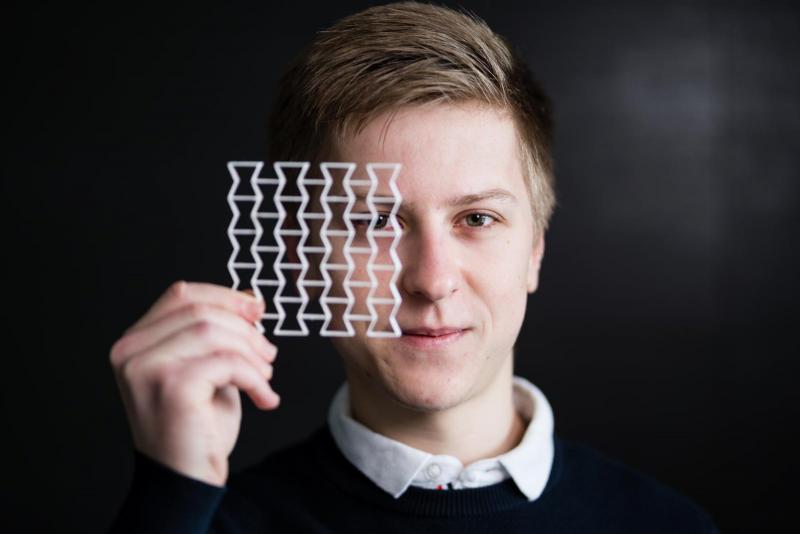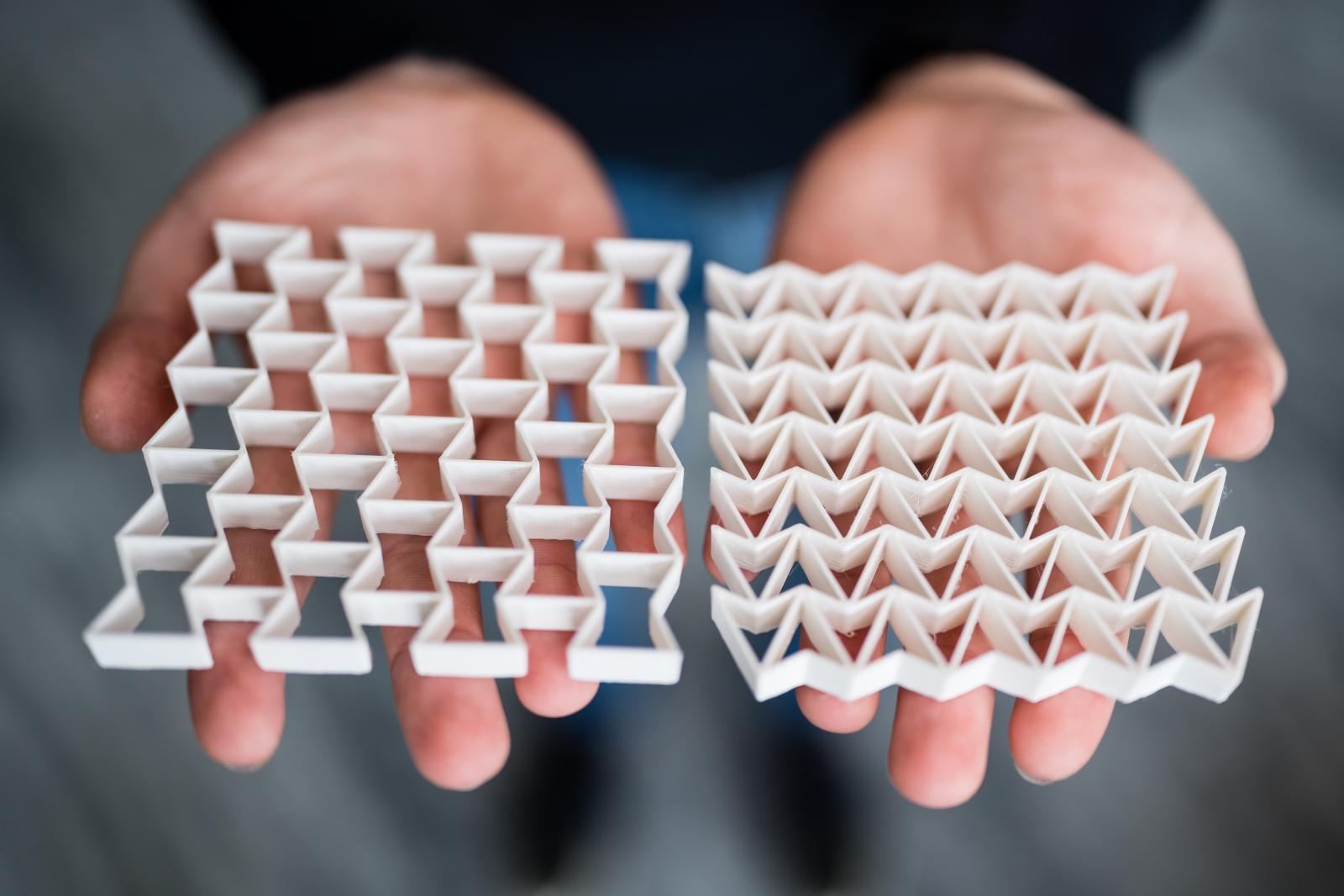People
Auxetic material behaves differently than you would expect, says student Tomáš Vítek

If this story were a fairy tale, it could be called “How a student of grammar school with a penchant for math and physics found his way to the engineering school and wrote the best bachelor's thesis.” But it's a true story, and thanks to his work on auxetic materials that expand instead of thinning when stretched, Tomáš Vítek has become the holder of the 8 awards from the BUT for best bachelor's thesis last year.
“Auxetic materials have a special structure that makes them behave in the opposite way to normal. If we stretch them, one expects a thinning, but the auxetic material will expand. And if we squeeze it, the auxetic material becomes narrower, even though one would expect the exact opposite,” explains Tomáš Vítek and adds in the same breath that when choosing his bachelor's thesis he was fascinated by this peculiarity.
The strange behaviour of auxetic materials is not related to what they are made of, but purely to their structure. “They can be made of aluminium or steel, they can be made of basically anything, it's just a matter of creating the right structure. Commonly, auxetic materials are produced, for example, on 3D printers. They are also found in nature to a small extent, but these are rather exceptions, such as specific types of minerals that behave in this way when loaded in a certain direction. But the vast majority of them are artificial,” he adds.
Cells in the structure of auxetic material can have different shapes. Some look like arrows, others like a collapsed honeycomb. “I chose three different shapes and investigated what would happen if I changed the parameters, for example if the cell was stretched or bevelled more. The influence of the parameters on the resulting material behaviour was determined by calculation. It was purely computational modelling, but when comparing my results with experiments described in the literature, it fits,” says Tomáš, adding that his supervisor, Oldřich Ševeček from the Institute of Solid Mechanics, Mechatronics and Biomechanics, also has a great contribution to the quality of the work.

The eight best
Tomáš's bachelor's thesis was sent by the faculty management to the competition of the best bachelor's theses in Brno technology for the past year. Tomáš eventually won the show of 8 from BUT, sharing the first place with Denisa Hývlová, a student of FEEC (Faculty of Electrical Engineering and Communication), who dealt with automatic detection of microcalcifications in mammographic images.
“Of course I was pleased to have succeeded, especially in such a good competition. Out of curiosity, I took a quick look at the other competitors and all the presentations were great,” says Tomáš. He was thrilled not only with the first place, but also with the presentation skills course he was able to take as part of the competition.
Auxetic materials are still waiting for mass application in practice, and scientists continue to work on understanding them better. However, ideas about their use already exist. “They could be used to make, for example, fasteners, they could be part of composites. Thanks to the way auxetic materials behave, they show increased resistance to cracks and also good damping capabilities, there is great potential here,” adds Vítek, although he wants to focus on other topics in his thesis. “I want to experience something new again,” he concludes.
(ivu)
Obelix flew to the United States
Chickens with their heads in the clouds
Alexandra Streďanská’s fascination with fascia and hyaluronic acid
When design helps. With the design of a dog wheelchair, the student succeeded in an international competition
Awarded student Jiří Kabát uses an electron microscope to measure the temperature of nanoparticles